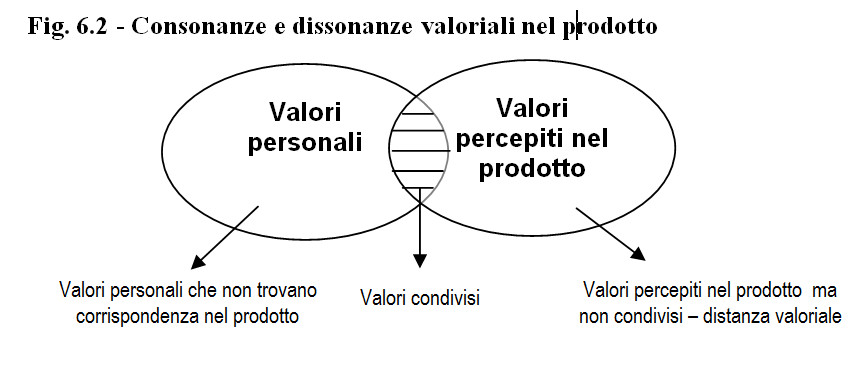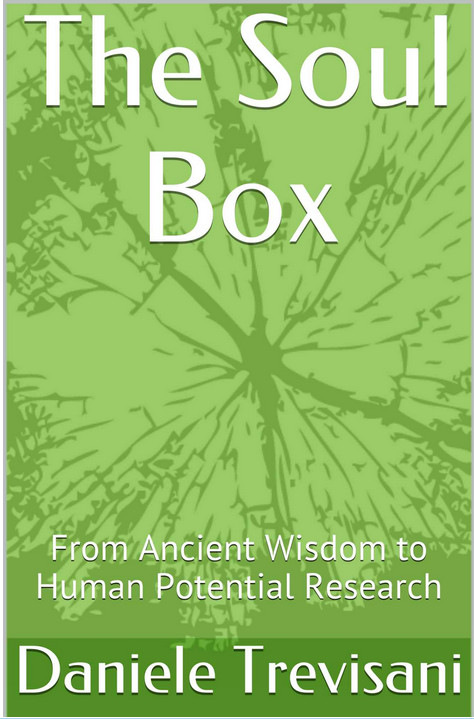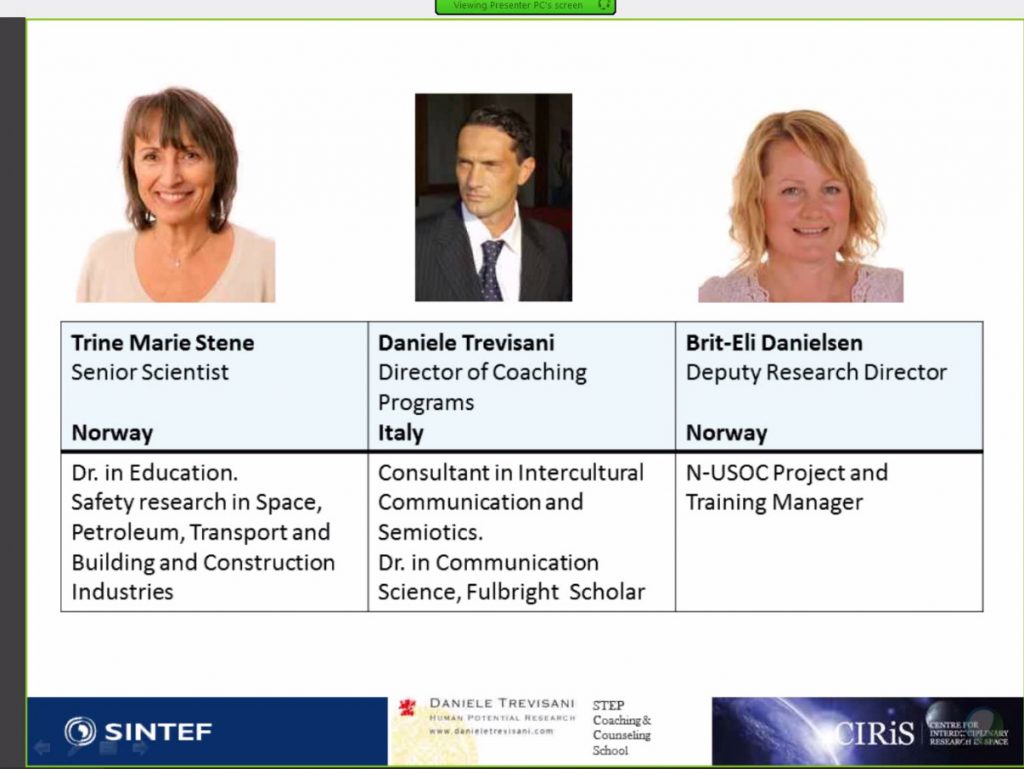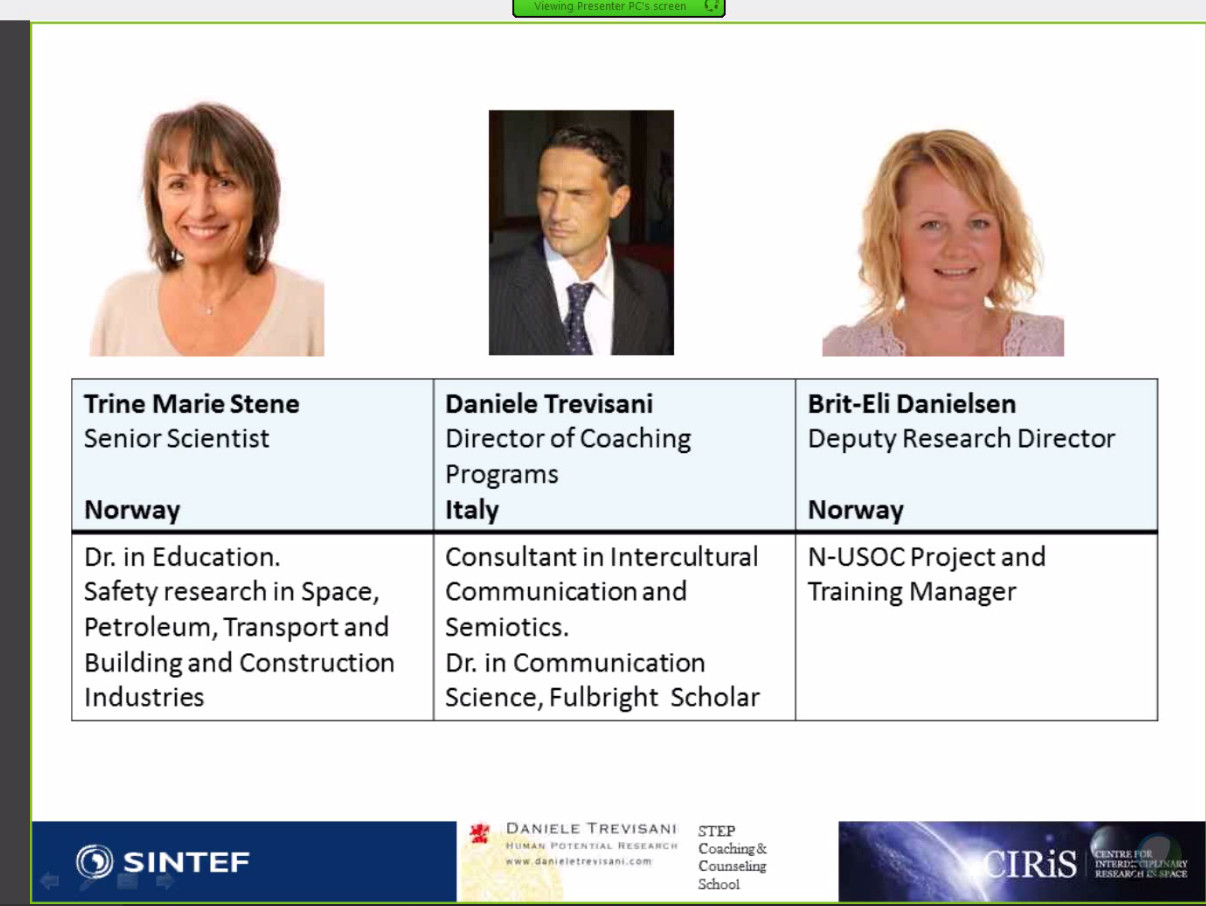https://www.youtube.com/watch?v=PYUOzVEo_Os
Psychological resilience
From Wikipedia, the free encyclopedia
Psychological resilience is defined as an individual’s ability to properly adapt to stress and adversity. Stress and adversity can come in the shape of family or relationship problems, health problems, or workplace and financial worries, among others.[1] Resilience is not a rare ability; in reality, it is found in the average individual and it can be learned and developed by virtually anyone. Resilience should be considered a process, rather than a trait to be had.[2]
A common misapprehension is that resilient people are free from negative emotions or thoughts, remaining optimistic in most or all situations. To the contrary, resilient individuals have, through time, developed coping techniques that allow them to effectively and relatively easily navigate around or through crises.[3][4][5][6] In other words, people who demonstrate resilience are people with optimistic attitude and positive emotionality and are, by practice, able to effectively balance negative emotions with positive ones.[1]
Background
Resilience is generally thought of as a “positive adaptation” after a stressful or adverse situation.[7] In other words, resilience is one’s ability to bounce back from a negative experience. The Children Institute explains that “resilience research is focused on studying those who engage in life with hope and humor despite devastating losses”. It is important to note that resilience is not only about overcoming a deeply stressful situation, but also coming out of the said situation with “competent functioning”. Resiliency allows a person to rebound from adversity as a strengthened and more resourceful person. The Relaxation Response Resiliency (3RP) program was developed by the MGH Benson-Henry Institute for Mind Body Medicine to help people enhance their resiliency.[8]
History
The first research on resilience was published in 1973. The study used epidemiology, which is the study of who gets ill, who does not, and why, to uncover the risks and the protective factors that now help define resilience.[9] The year later, the same group of researchers created tools to look at systems that support development of resilience.[10]
Emmy Werner was one of the early scientists to use the term resilience in the 1970s. She studied a cohort of children from Kauai, Hawaii. Kauai was quite poor and many of the children in the study grew up with alcoholic or mentally ill parents. Many of the parents were also out of work.[11] Werner noted that of the children who grew up in these detrimental situations, two-thirds exhibited destructive behaviors in their later teen years, such as chronic unemployment, substance abuse, and out-of-wedlock births (in case of teenage girls). However, one-third of these youngsters did not exhibit destructive behaviours. Werner called the latter group ‘resilient’.[12] Thus, resilient children and their families were those who, by definition, demonstrated traits that allowed them to be more successful than non-resilient children and families.
Resilience also emerged as a major theoretical and research topic from the studies of children of schizophrenic mothers in the 1980s.[13] In an 1989 study,[14] the results showed that children with a schizophrenic parent may not obtain an appropriate level of comforting caregiving–compared to children with healthy parents–and that such situations often had a detrimental impact on children’s development. On the other hand, some children of ill parents thrived well and were competent in academic achievement, and therefore led researchers to make efforts to understand such responses to adversity.
In the onset of the research on resilience, researchers have been devoted to discovering the protective factors that explain people’s adaptation to adverse conditions, such as maltreatment,[15] catastrophic life events,[16] or urban poverty.[17] The focus of empirical work then has been shifted to understand the underlying protective processes. Researchers endeavor to uncover how some factors (e.g. family) may contribute to positive outcomes.[17]
Process
In all these instances, resilience is best understood as a process. It is often mistakenly assumed to be a trait of the individual, an idea more typically referred to as “resiliency”.[18] Most research now shows that resilience is the result of individuals being able to interact with their environments and the processes that either promote well-being or protect them against the overwhelming influence of risk factors.[19] These processes can be individual coping strategies, or may be helped along by good families, schools, communities, and social policies that make resilience more likely to occur.[20] In this sense “resilience” occurs when there are cumulative “protective factors”. These factors are likely to play a more and more important role the greater the individual’s exposure to cumulative “risk factors”. The phrase “risk and resilience” in this area of study is quite common. The focus in research has shifted from “protective factors” toward protective “processes”; trying to understand how different factors are involved in both promoting well-being and protecting against risk. A related concept to psychological resilience is family resilience.
Biological models
There is some limited research that, like trauma, resilience is epigenetic – that is, it may be inherited — but the science behind this finding is preliminary.[21]
An emerging field in the study of resilience is the neurobiological basis of resilience to stress.[22] For example, neuropeptide Y (NPY) and 5-Dehydroepiandrosterone (5-DHEA) are thought to limit the stress response by reducing sympathetic nervous system activation and protecting the brain from the potentially harmful effects of chronically elevated cortisol levels respectively.[23] In addition, the relationship between social support and stress resilience is thought to be mediated by the oxytocin system’s impact on the hypothalamic-pituitary-adrenal axis.[24]
Related factors
Studies show that there are several factors which develop and sustain a person’s resilience:[25]
- The ability to make realistic plans and being capable of taking the steps necessary to follow through with them
- A positive self-concept and confidence in one’s strengths and abilities
- Communication and problem-solving skills
- The ability to manage strong impulses and feelings
These factors are not necessarily inherited; they can be developed in any individual and they promote resilience.
Positive emotions
There is significant research found in the literature on the relationship between positive emotions and resilience. Studies show that maintaining positive emotions whilst facing adversity promote flexibility in thinking and problem solving. Positive emotions serve an important function in their ability to help an individual recover from stressful experiences and encounters. That being said, maintaining a positive emotionality aids in counteracting the physiological effects of negative emotions. It also facilitates adaptive coping, builds enduring social resources, and increases personal well-being.[25]
While some research indicates that psychological resilience is a relatively stable personality trait, new research suggests that positive emotions are critical to trait resilience. This is not to say that positive emotions are merely a by-product of resilience, but rather that feeling positive emotions during stressful experiences may have adaptive benefits in the coping process of the individual.[26] Empirical evidence for this prediction arises from research on resilient individuals who have a propensity for coping strategies that concretely elicit positive emotions, such as benefit-finding and cognitive reappraisal, humor, optimism, and goal-directed problem-focused coping. Individuals who tend to approach problems with these methods of coping may strengthen their resistance to stress by allocating more access to these positive emotional resources.[27]
Positive emotions not only have physical outcomes but also physiological ones. Some physiological outcomes caused by humor include improvements in immune system functioning and increases in levels of salivary immunoglobin A, a vital system antibody, which serves as the body’s first line of defense in respiratory illnesses.,[28][29] Moreover, other health outcomes include faster injury recovery rate and lower readmission rates to hospitals for the elderly, and reductions in a patient’s stay in the hospital, among many other benefits. A study was done on positive emotions in trait-resilient individuals and the cardiovascular recovery rate following negative emotions felt by those individuals. The results of the study showed that trait-resilient individuals experiencing positive emotions had an acceleration in the speed in rebounding from cardiovascular activation initially generated by negative emotional arousal, i.e. heart rate and the like.[26]
Grit
Grit refers to the perseverance and passion for long-term goals.[30] This is characterized as working persistently towards challenges, maintained effort and interest over years despite negative feedback, adversity, plateaus in progress, or failure.[30] High grit people view accomplishments as a marathon rather than an immediate goal. High grit individuals normally earn higher GPAs in school, and make fewer career changes than less gritty individuals.[30]
Grit affects the effort a person contributes by acting on the importance pathway. When people value a goal as more valuable, meaningful, or relevant to their self-concept they are willing to expend more effort on it when necessary. The influence of individual differences in grit results in different levels of effort-related cardiac activity when gritty and less gritty individuals performed the same task. Grit is associated with differences in potential motivation, one pathway in motivational intensity theory. Grit may also influence an individual’s perception of task difficulty.[31]
Grit was highly correlated with the Big Five conscientiousness trait.[30] Although grit and conscientiousness highly overlap in their achievement aspects, they differ in their emphasis. Grit emphasizes long-term stamina, whereas conscientiousness focuses on short-term intensity.[30]
Grit varies with level of education and age. More educated adults tend to be higher in grit than less educated individuals of the same age.[30] Post college graduates report higher grit levels than most other education level groups.[30] Grit increases with age when education level is controlled for.[30]
In life achievements, grit may be as important as talent. College students at an elite university who scored high in grit also earned higher GPAs than their classmates, despite having lower SAT scores.[30] In a study at the West Point military academy it was found that grit was a more reliable predictor of first summer retention than self-control or a summary measure of cadet quality.[30] Gritty competitors at the Scripps National Spelling Bee outranked other competitors who scored lower in grit, at least partially due to accumulated practice.[30]
Grit may also serve as a protective factor against suicide. A study at Stanford University found that grit was predictive of psychological health and well-being in medical residents.[32] Gritty individuals possess self-control and regular commitment to goals that allows them to resist impulses, such as to engage in self-harm. Individuals high in grit also focus on future goals, which may stop them from attempting suicide. It is believed that because grit encourages individuals to create and sustain life goals, these goals provide meaning and purpose in life. Grit alone does not seem to be sufficient, however. Only individuals with high gratitude and grit have decreased suicidal ideation over long periods of time. Gratitude and grit work together to enhance meaning in life, offering protection against death and suicidal thoughts or plans.[33]
Other factors
A study that was conducted among high achieving professionals who seek challenging situations that require resilience. Research has examined thirteen high achievers from various professions, all of whom had experienced challenges in the workplace and negative life events over the course of their careers but who had also been recognized for their great achievements in their respective fields. Participants were interviewed about everyday life in the workplace as well as their experiences with resilience and thriving. The study found six main predictors of resilience: positive and proactive personality, experience and learning, sense of control, flexibility and adaptability, balance and perspective, and perceived social support. High achievers were also found to engage in many activities unrelated to their work such as engaging in hobbies, exercising, and organizing meetups with friends and loved ones.[34]
Several factors are found to modify the negative effects of adverse life situations. Many studies show that the primary factor is to have relationships that provide care and support, create love and trust, and offer encouragement, both within and outside the family. Additional factors are also associated with resilience, like the capacity to make realistic plans, having self-confidence and a positive self image, developing communications skills, and the capacity to manage strong feelings and impulses.[35]
Another protective factor is related to moderating the negative effects of environmental hazards or a stressful situation in order to direct vulnerable individuals to optimistic paths, such as external social support. More specifically a 1995 study distinguished three contexts for protective factors:[36]
- personal attributes, including outgoing, bright, and positive self-concepts;
- the family, such as having close bonds with at least one family member or an emotionally stable parent; and
- the community, such as receiving support or counsel from peers.
Furthermore, a study of the elderly in Zurich, Switzerland, illuminated the role humor plays as a coping mechanism to maintain a state of happiness in the face of age-related adversity.[37]
Besides the above distinction on resilience, research has also been devoted to discovering the individual differences in resilience. Self-esteem, ego-control, and ego-resiliency are related to behavioral adaptation.[38] For example, maltreated children who feel good about themselves may process risk situations differently by attributing different reasons to the environments they experience and, thereby, avoid producing negative internalized self-perceptions. Ego-control is “the threshold or operating characteristics of an individual with regard to the expression or containment”[39] of their impulses, feelings, and desires. Ego-resilience refers to “dynamic capacity,……to modify his or her model level of ego-control, in either direction, as a function of the demand characteristics of the environmental context”[40]
Maltreated children who experienced some risk factors (e.g., single parenting, limited maternal education, or family unemployment), showed lower ego-resilience and intelligence than nonmaltreated children. Furthermore, maltreated children are more likely than nonmaltreated children to demonstrate disruptive-aggressive, withdraw, and internalized behavior problems. Finally, ego-resiliency, and positive self-esteem were predictors of competent adaptation in the maltreated children.[38]
Demographic information (e.g., gender) and resources (e.g., social support) are also used to predict resilience. Examining people’s adaptation after disaster showed women were associated with less likelihood of resilience than men. Also, individuals who were less involved in affinity groups and organisations showed less resilience.[41]
Certain aspects of religions and spirituality may, hypothetically, promote or hinder certain psychological virtues that increase resilience. Research has not established connection between spirituality and resilience. According to the 4th edition of Psychology of Religion by Hood, et al., the “study of positive psychology is a relatively new development…there has not yet been much direct empirical research looking specifically at the association of religion and ordinary strengths and virtues”.[42] In a review of the literature on the relationship between religiosity/spirituality and PTSD, amongst the significant findings, about half of the studies showed a positive relationship and half showed a negative relationship between measures of religiosity/spirituality and resilience.[43] The United States Army has received criticism for promoting spirituality in its new [Comprehensive Soldier Fitness] program as a way to prevent PTSD, due to the lack of conclusive supporting data.
Building
The American Psychological Association suggests “10 Ways to Build Resilience”, which are:
- to maintain good relationships with close family members, friends and others;
- to avoid seeing crises or stressful events as unbearable problems;
- to accept circumstances that cannot be changed;
- to develop realistic goals and move towards them;
- to take decisive actions in adverse situations;
- to look for opportunities of self-discovery after a struggle with loss;
- to develop self-confidence;
- to keep a long-term perspective and consider the stressful event in a broader context;
- to maintain a hopeful outlook, expecting good things and visualizing what is wished;
- to take care of one’s mind and body, exercising regularly, paying attention to one’s own needs and feelings.
The Besht model of natural resilience building in an ideal family with positive access and support from family and friends, through parenting illustrates 4 key markers. They are:
- Realistic Upbringing.
- Effective Risk Communications.
- Positivity and Restructuring of demanding situations.
- Building Self Efficacy and Hardiness.
Definitions
- Self-efficacy:- The belief in one’s ability to organize and execute the courses of action required to achieve necessary and desired goals.[44]
- Hardiness:- Hardiness is a composite of interrelated attitudes of commitment, control, and challenge.[45]
A number of self-help approaches to resilience-building have been developed, drawing mainly on the theory and practice of Cognitive behavioural and Rational emotive behavior therapy.[46] For example, a group cognitive-behavioral intervention, called the Penn Resiliency Program (PRP), has been shown to foster various aspects of resilience. A meta-analysis of 17 PRP studies showed that the intervention significantly reduces depressive symptoms over time.[47]
Furthermore, the idea of ‘Resilience Building’ is debatably at odds with such conceptualizations of resilience as a description of doing well despite experiencing adversity.[48] “Resilience Building” is often used to imply that resilience is a characteristic that the person has, that this characteristic can be bestowed on to a person.[49] Those who view resilience as a description of doing well despite adversity instead view efforts at increasing promotive and protective factors in the lives of individuals as means of encouraging resilience.[50] In this way, increasing an individual’s resources to cope with or otherwise address the negative aspects of risk or adversity is how to promote, or ‘build,’ resilience.[51]
Contrasting research finds that utilizing cognitive emotion regulatory strategies to enhance an individual’s resilience can have great implications when dealing with psychiatric illness in adults and that resilience building can be implemented as a therapeutic strategy.[52] While initial studies of resilience originated with developmental scientists studying children in high-risk environments, a study on 230 adults diagnosed with depression and anxiety that emphasized cognitive emotion regulation strategies, contributing to resilience in patients. These strategies focused on planning, positively reappraising events, and reducing rumination.[52] Patients with improved resilience were found to yield better treatment outcomes than patients with non-resilience focused treatment plans,[52] providing potential information for developing new psychotherapeutic interventions that may better treat mental disease by focusing on psychological resilience.
Other development programs
The Head Start program was shown to promote resilience.[53] So was the Big Brothers Big Sisters Programme, the Abecedarian Early Intervention Project,[54][55] and social programs for youth with emotional or behavioral difficulties.[56]
Tuesday’s Children,[57] a family service organization that made a long-term commitment to the individuals that have lost loved ones to 9/11 and terrorism around the world, works to build psychological resilience through programs such as Mentoring and Project COMMON BOND, an 8-day peace-building and leadership initiative for teens, ages 15–20, from around the world who have been directly impacted by terrorism.[58]
Children
Resilience in children refers to individuals who are doing better than expected, given a history that includes risk or adverse experience. Therefore, it is not a trait or something that some children ‘just have.’ There is no such thing as an ‘invulnerable child’ who can overcome any obstacle or adversity that she encounters in life and in fact the trait is quite common.[49] Resilience is the product of a large number of developmental processes over time that has allowed children who experience some sort of risk to continue to develop competently (while other children have not).[59]
Research on ‘protective factors’, which are characteristics of children or situations that particularly help children in the context of risk has helped developmental scientists to understand what matters most for resilient children. Two of these that have emerged repeatedly in studies of resilient children are good cognitive functioning (like cognitive self-regulation and IQ) and positive relationships (especially with competent adults, like parents).[60] Children who have protective factors in their lives tend to do better in some risky contexts when compared to children without protective factors in the same contexts. However, this is not a justification to expose any child to risk. Children do better when not exposed to high levels of risk or adversity.
Building in the classroom
Resilient children within classroom environments have been described as working and playing well and holding high expectations, have often been characterized using constructs such as locus of control, self-esteem, self-efficacy, and autonomy.[61] All of these things work together to prevent the debilitating behaviors that are associated with learned helplessness.
Communities play a huge role in fostering resilience. The clearest sign of a cohesive and supportive community is the presence of social organizations that provide healthy human development.[62] Services are unlikely to be used unless there is good communication concerning them. Children who are repeatedly relocated do not benefit from these resources, as their opportunities for resilience-building, meaningful community participation are removed with every relocation.[63]
Role of the family
Fostering resilience in children requires family environments that are caring and stable, hold high expectations for children’s behavior and encourage participation in the life of the family.[64] Most resilient children have a strong relationship with at least one adult, not always a parent, and this relationship helps to diminish risk associated with family discord. Even if found that even though divorce produces stress, the availability of social support from family and community can reduce stress and yield positive outcomes.[65] Any family that emphasizes the value of assigned chores, caring for brothers or sisters, and the contribution of part-time work in supporting the family helps to foster resilience.[12]
Families in poverty
Numerous studies have shown that some practices that poor parents utilize help promote resilience within families. These include frequent displays of warmth, affection, emotional support; reasonable expectations for children combined with straightforward, not overly harsh discipline; family routines and celebrations; and the maintenance of common values regarding money and leisure.[66] According to sociologist Christopher B. Doob, “Poor children growing up in resilient families have received significant support for doing well as they enter the social world—starting in daycare programs and then in schooling.”[67]
Role of religion
Religion can have a positive effect on resilience in children. Children often find a sense of belonging, a strong community, and stability through various forms of organized religion. A religious setting can foster positive growth in multiple areas. This pattern is likely to be the result of many protective processes that take place inside a religious institution. For example, attending a church has been shown to increase a child’s social network, provide a feeling of cohesion and belonging in her community, even promote a sense of personal control and sense of social justice when threatened.[68]
Bullying
Beyond preventing bullying, it is also important to consider how interventions based on emotional intelligence(EI) are important in the case that bullying will occur. Increasing EI may be an important step in trying to foster resilience among victims. When a person faces stress and adversity, especially of a repetitive nature, their ability to adapt is an important factor in whether they have a more positive or negative outcome.[69] Resilient individuals are those who are considered to have positive developmental outcomes in light of their negative experiences, such as bullying. A 2013 study examined adolescents who illustrated resilience to bullying and found some interesting gendered differences, with higher behavioral resilience found among girls and higher emotional resilience found among boys. Despite these differences, they still implicated internal resources and negative emotionality in either encouraging or being negatively associated with resilience to bullying respectively and urged for the targeting of psychosocial skills as a form of intervention.[70] Emotional intelligence has been illustrated to promote resilience to stress[71] and as mentioned previously, the ability to manage stress and other negative emotions can be preventative of a victim going on to perpetuate aggression.[72] One factor that is important in resilience is the regulation of one’s own emotions.[69] Schneider et al. (2013) found that emotional perception was significant in facilitating lower negative emotionality during stress and Emotional Understanding facilitated resilience and has a positive correlation with positive affect.[71]
Studies in specific populations and causal situations
Affected populations
Among transgender youth
Transgender youth experience a wide range of abuse and lack of understanding from the people in their environment and are better off with a high resilience to deal with their lives. A study was done looking at 55 transgender youths studying their sense of personal mastery, perceived social support, emotion-oriented coping and self-esteem. It was seen that around 50% of the variation in the resilience aspects accounted for the problematic issues of the teens. This means that transgender youths with lower resilience were more prone to mental health issues, including depression and trauma symptoms. Emotion-oriented coping was a strong aspect of resilience in determining how depressed the individuals were.[73]
Resilience among pregnant adolescents and depressive symptoms
Pregnancies among adolescents are considered as a complication, as they favour education interruption, poor present and future health, higher rates of poverty, problems for present and future children, among other negative outcomes.[74]
Investigators from the Ecuadorian Catholic University (Universidad Católica de Santiago de Guayaquil) (Guayaquil) and the Spanish University of Zaragoza (Zaragoza), performed a comparative study at the Enrique C. Sotomayor Obstetric and Gynecology Hospital (Guayaquil) assessing resilience differences between pregnant adolescents and adults.[75]
A 56.6% of gravids presented total CESD-10 scores 10 or more indicating depressed mood. Despite this, total CESD-10 scores and depressed mood rate did not differ among studied groups. Adolescents did, however, display lower resilience reflected by lower total resilience scores and a higher rate of scores below the calculated median (P < 0.05). Logistic regression analysis could not establish any risk factor for depressed mood among studied subjects; however, having an adolescent partner and a preterm delivery related to a higher risk for lower resilience.
Causal situations
Divorce
Oftentimes divorce is viewed as detrimental to one’s emotional health, but studies have shown that cultivating resilience may be beneficial to all parties involved. The level of resilience a child will experience after their parents have split is dependent on both internal and external variables. Some of these variables include their psychological and physical state and the level of support they receive from their schools, friends, and family friends.[7] The ability to deal with these situations also stems from the child’s age, gender, and temperament. Children will experience divorce differently and thus their ability to cope with divorce will differ too. About 20–25% of children will “demonstrate severe emotional and behavioral problems” when going through a divorce.[7] This percentage is notably higher than the 10% of children exhibiting similar problems in married families .[76] Despite having divorces parents of about 75–80% of these children will “develop into well-adjusted adults with no lasting psychological or behavioral problems”. This comes to show that most children have the tools necessary to allow them to exhibit the resilience needed to overcome their parents’ divorce.
The effects of the divorce extend past the separation of both parents. The remaining conflict between parents, financial problems, and the re-partnering or remarriage of parents can cause lasting stress.[7] Studies conducted by Booth and Amato (2001) have shown that there is no correlation between post-divorce conflict and the child’s ability to adjust to their life circumstance.[76] On the other hand Hetherington (1999) completed research on this same topic and did find adverse affects in children.[76] In regards to the financial standing of a family, divorce does have the potential to reduce the children’s style of living. Child support is often given to help cover basic needs such as schooling. If the parents’ finances are already scarce then their children may not be able to participate in extracurricular activities such as sports and music lessons, which can be detrimental to their social lives.
Repartnering or remarrying can bring in additional levels of conflict and anger into their home environment. One of the reasons that re-partnering causes addition stress is because of the lack of clarity in roles and relationships; the child may not know how to react and behave with this new “parent” figure in their life. In most cases, bringing in a new partner/spouse will be the most stressful when done shortly after the divorce. In the past, divorce had been viewed as a “single event”, but now research shows that divorce encompasses multiple changes and challenges.[76] It is not only internal factors that allow for resiliency, but the external factors in the environment are critical for responding to the situation and adapting. Certain programs such as the 14-week Children’s Support Group and the Children of Divorce Intervention Program may help a child cope with the changes that occur from a divorce.[77]
Natural disasters
Resiliency is especially important in the face of a natural disaster such as a hurricane or a tsunami. The ability for one to come back from a devastating event is crucial to their ability to thrive. Resilience after a natural disaster can be gauged in a number of different ways. It can be gauged on an individual level, a community level, and on a physical level. The first level, the individual level, can be defined as each independent person in the community. The second level, the community level, can be defined as all those inhabiting the locality affected. Lastly, the physical level can be defined as the infrastructure of the locality affected.[78] UNESCAP funded research on how communities show resiliency in the wake of natural disasters.[79] They found that, physically, communities were more resilient if they banded together and made resiliency an effort of the whole community.[79] Social support is key in resilient behavior, and especially the ability to pool resources.[79] In pooling social, natural, and economic resources, they found that communities were more resilient and able to over come disasters much faster than communities with an individualistic mindset.[79] The World Economic Forum met to discuss resiliency after natural disasters in 2014, and contributed a theory of their own. They believe that countries that are more economically sound, and have more individuals with the ability to diversify their livelihoods, will show higher levels of resiliency.[80] This has not been studied in depth yet, but the ideas brought about through this forum appear to be fairly consistent with already existing research.[80] Resiliency after a natural disaster is a topic that is relevant for people across all time and cultures. Natural disasters are hard to predict, so the ability to prepare for them is rather limited. However, communities can develop plans and discuss actions that can be taken in the face of a disaster. Resiliency is a quality that ultimately comes down to the individual, but an individual is more likely to be able to show resilient qualities if they have support, socially and economically. Having a strong sense of community is key in resiliency, so it is crucial for this to be developed and cultivated within each community.
Death of a family member
Little research has been done on the topic of family resilience in the wake of the death of a family member.[81] Traditionally, clinical attention to bereavement has focused on the individual mourning process rather than on those of the family unit as a whole. Resiliency is distinguished from recovery as the “ability to maintain a stable equilibrium”[82] which is conducive to balance, harmony, and recovery. Families must learn to manage familial distortions caused by the death of the family member, which can be done by reorganizing relationships and changing patterns of functioning to adapt to their new situation.[83] Exhibiting resilience in the wake of trauma can successfully traverse the bereavement process without long-term negative consequences.[84]
One of the healthiest behaviors displayed by resilient families in the wake of a death is honest and open communication. This facilitates comprehensibility of the crisis. Sharing the experience of the death can promote immediate and long-term adaptation to the recent loss of a loved one. Empathy is a crucial component in resilience because it allows mourners to understand one another’s positions, tolerate conflict, and be ready to grapple with differences that may arise. Another crucial component to resilience is the maintenance of a routine that helps to bind the family together through regular contact and order. The continuation of education and a connection with peers and teachers at school is an important support for children struggling with the death of a family member.[85]
Criticism
Brad Evans and Julian Reid criticize resilience discourse and its rising popularity in their book, Resilient Life.[86] The authors assert that policies of resilience can put the onus of disaster response on individuals rather than publicly coordinated efforts. Tied to the emergence of neoliberalism, climate change theory, third-world development, and other discourses, Evans and Reid argue that promoting resilience draws attention away from governmental responsibility and towards localized, laissez-faire responses.
Another criticism regarding resilience is its definition. Like other psychological phenomena, by defining specific psychological and affective states in certain ways, controversy over meaning will always ensue. How the term resilience is defined affects research focuses; different or insufficient definitions of resilience will lead to inconsistent research about the same concepts. Research on resilience has become more heterogeneous in its outcomes and measures, convincing some researchers to abandon the term altogether due to it being attributed to all outcomes of research where results were more positive than expected.[87]
There is also controversy about the indicators of good psychological and social development when resilience is studied across different cultures and contexts.[88][89][90] The American Psychological Association’s Task Force on Resilience and Strength in Black Children and Adolescents,[91] for example, notes that there may be special skills that these young people and families have that help them cope, including the ability to resist racial prejudice. Researchers of indigenous health have shown the impact of culture, history, community values, and geographical settings on resilience in indigenous communities.[92] People who cope may also show “hidden resilience”[93] when they don’t conform with society’s expectations for how someone is supposed to behave (in some contexts, aggression may be required to cope, or less emotional engagement may be protective in situations of abuse).[94] Recently there has also been evidence that resilience can indicate a capacity to resist a sharp decline in other harm even though a person temporarily appears to get worse.[95][96]
The definition also becomes an issue with time. As research increases over time, this gives more information to be referenced and cited. Over time the definitions of resilience and what it encompasses will regress towards a lexical mean that may or may not be inclusive of everything composing resilience.[87] Without objective means of defining resilience in a singular, all-encompassing term, using resilience as a theoretical psychological concept or therapeutic instrument will not be universally consistent or correct.

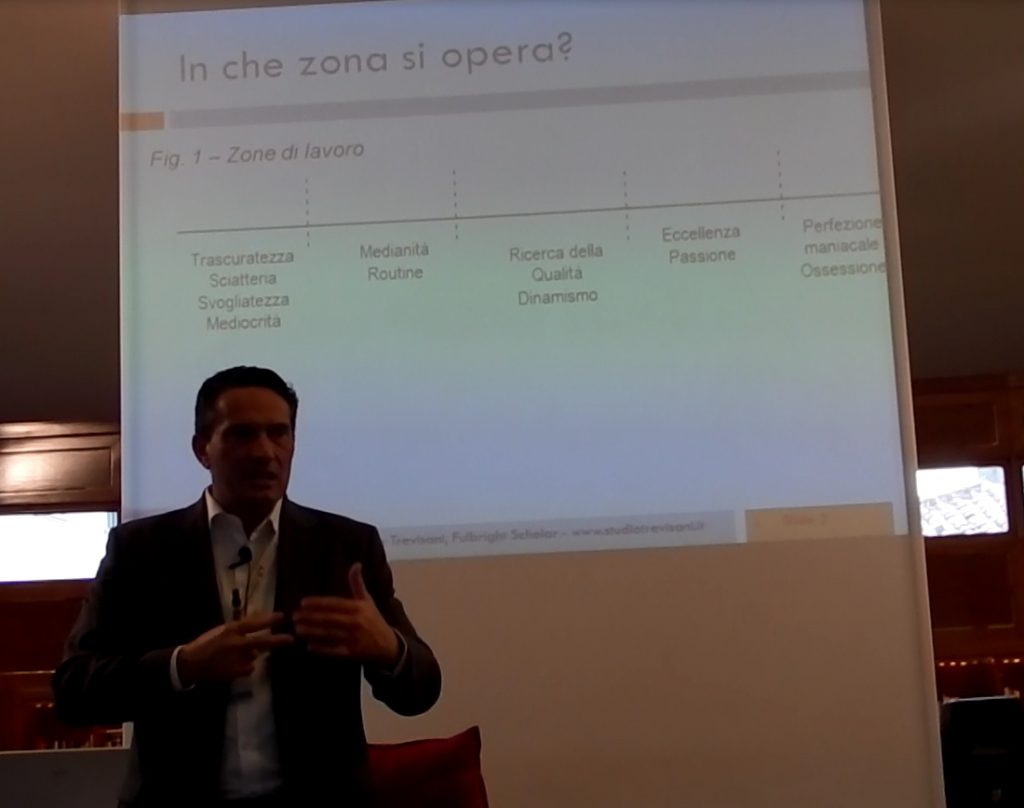
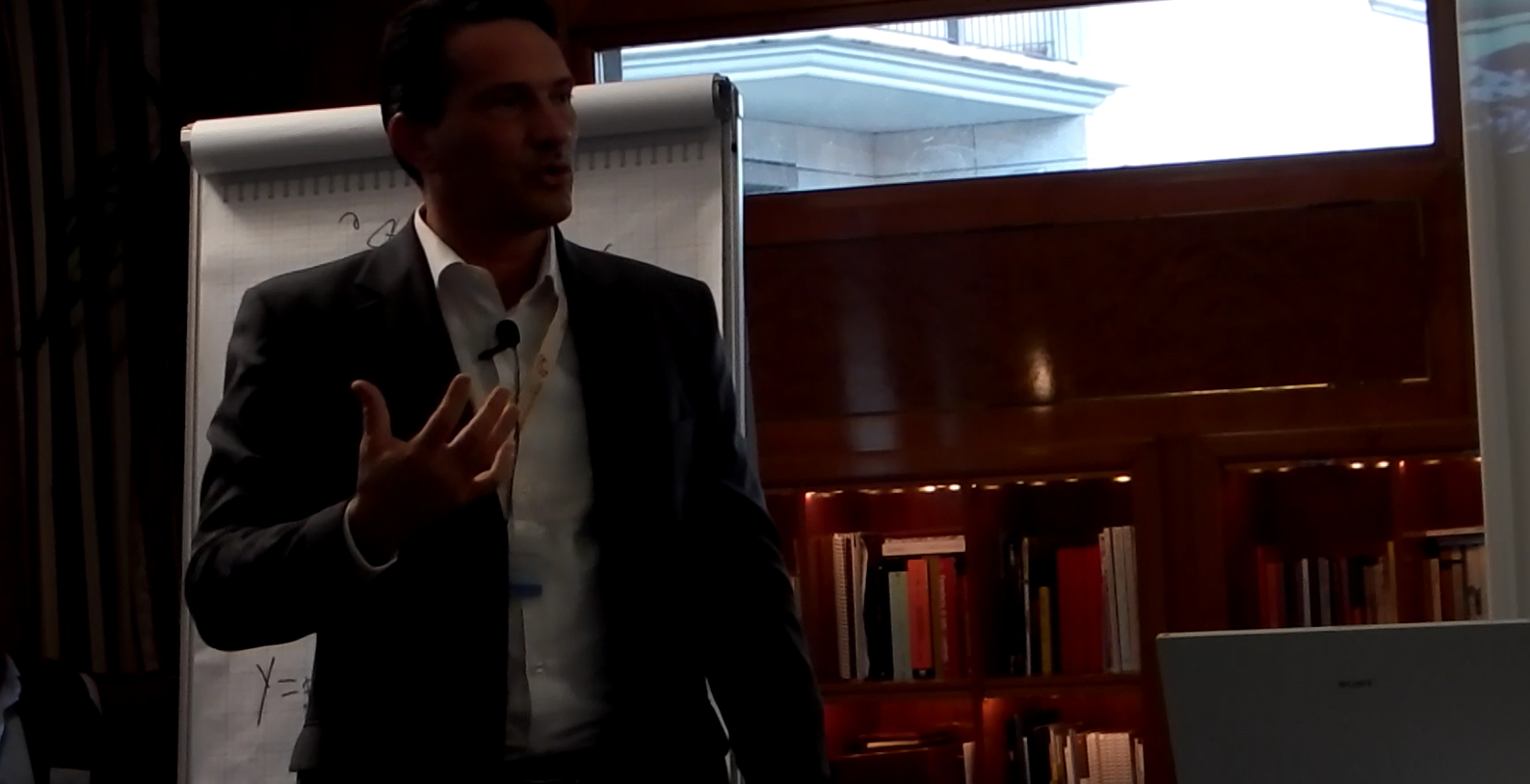

 metodo HPM (Human Potential Model) costituisce un modello innovativo per il lavoro di formazione e coaching, le azioni di sviluppo, la crescita delle performance.
metodo HPM (Human Potential Model) costituisce un modello innovativo per il lavoro di formazione e coaching, le azioni di sviluppo, la crescita delle performance.